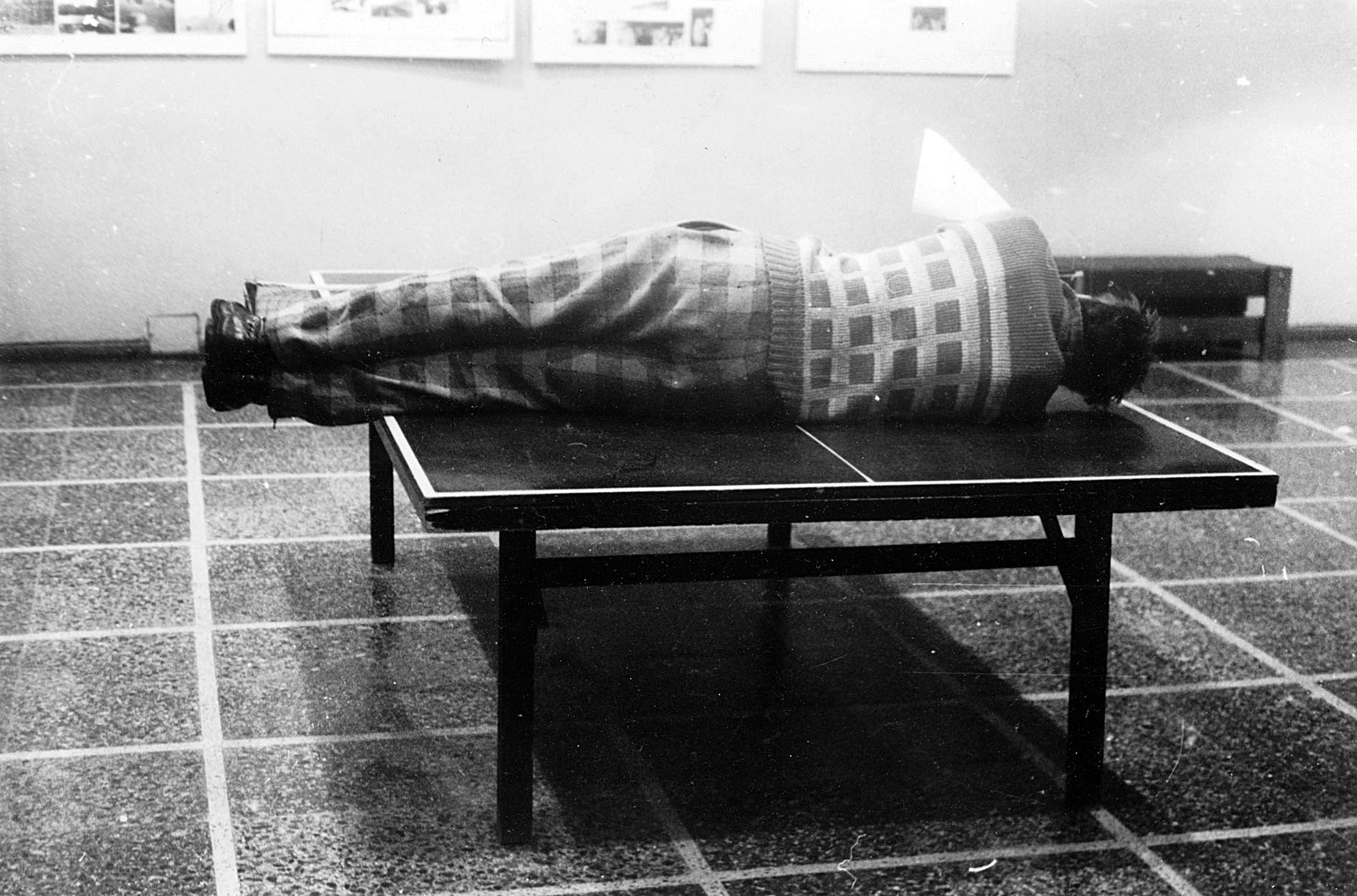An important element of rebellious art at the end of the 1990s was living and body art: happenings, art actions and performances.
In so-called body art actions, representation (characteristic of painting) was replaced by real processes, actual materials and the bodies of the artist or actor – physical objects and psychophysiological subjects experiencing the boundaries of their abilities. In Lithuania, body and material art actions did not strictly differ from performances, in which the artist acts personally. In contrast to an actor in the theatre, the artist did not portray another person, and his behavior – whether unusual or quite common to the routine – was comparable to real events in the artist's life. Happenings, in which bystanders were included (sometimes against their will) as participants, became – similarly to political activities – part of the life of the community and its history.
Living art arose and thrived in the United States, Western Europe and Japan at the end of the 1950s and through the 1960s. This was a time of growing social activism, political unrest and upheaval in the media. Western artists fought against the norms of the art market, conventional morality and a consumerist society. Happenings, art actions and performances became a means of political activism and expression for oppressed social groups, and soon spread to Eastern Europe.
Living art accompanied the numerous political actions of the Sąjūdis period, but they were first an attempt to revive cultural spheres and bring them closer to daily life. This movement is most clearly represented by the artist groups "Žalias lapas" (Green Leaf) and "Post Ars", as well as interdisciplinary and international happening and performance festivals.
Living art festivals were first organized in Lithuania by young composers (Gintaras Sodeika, Arūnas Dikčius, Šarūnas Nakas). On March 27, 1998, students of the State Art Institute and members of "Žalias lapas" – Gediminas Urbonas, Aidas Bareikis and Džiugas Katinas – held an event at the State Conservatory entitled Geležinis vilkas (The Iron Wolf), where they tested both the sound emanating from sculptures made of several tons of nonferrous metals as well as the patience of the audience.
Composers organized the first happening festival in the town of Anykščiai in the summer of 1988. In attendance was Professor Vytautas Landsbergis (soon to become the leader of an independent Lithuania), who shared with participants his memories of corresponding with Jurgius Mačiūnas. During an event called Paskutinė vakarienė (The Last Supper), "Žalias lapas" members wrapped themselves in red-painted gauze and distributed pages of the Communist Party manifesto to audience members, setting fire to a sacrificial table as a finale. In Nida, at the "Vėjas" international symposium organized by the Lithuanian Artists’ Union, the group presented art action Angakoko sugrįžimas (The Return of Angakok), dragging an enormous inflatable snake through the dunes around the city.
The most impressive event organized by "Žalias lapas", which thrived until 1992, was the presentation of Kelias (The Road) in December, 1990, in front of Vilnius City Hall (which at the time housed the Lithuanian Museum of Art). To the sound of amplified crashing cymbals, human figures drawn with soot and chalk were "run over" by cars, mixing the materials into a gray mass that settled onto the audience. The artists had received prior permission from city authorities and coordinated the event with city police who, as they regulated traffic, occasionally opened the street and urged drivers to pass through, including random people as participants in the event.
|
Read more: "Žalias lapas" (Green Leaf)
|




Comments
Write a comment